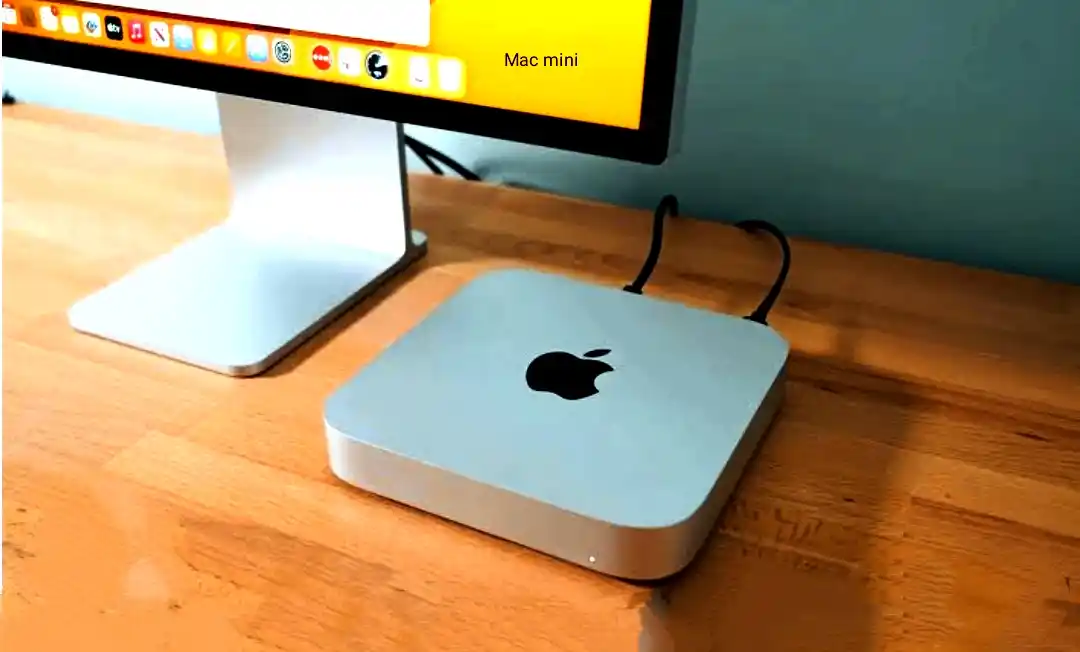The Ultimate Guide to the Mac Mini: Compact Powerhouse in a Small Package

The Mac Mini might be Apple’s most understated product, but it’s far from insignificant. It’s a compact and versatile computer that offers the power and functionality of a desktop Mac without the price or the bulk. Since its introduction in 2005, the Mac Mini has evolved significantly, transforming from an entry-level, budget-friendly option into a competent machine with impressive performance. This blog post will dive deep into the Mac Mini’s history, technical specifications, real-world use cases, advantages, disadvantages, and why it might be the perfect choice for specific users.
This guide explores the full spectrum of the Mac Mini—its transformation over the years, where it stands now, and how it compares to other Apple products. Whether you’re a professional looking for a compact office setup, a creative who needs reliable power for editing, or a casual user searching for a convenient desktop computer, this guide is for you.
Chapter 1: The Evolution of Mac Mini
Table of Contents
1.1 The Beginnings – 2005 Debut
The Mac Mini first appeared in January 2005, introduced by the iconic Steve Jobs at the Macworld Conference & Expo. It was Apple’s attempt to tap into the market of users looking for an affordable way to transition from Windows to Mac OS. Unlike other Macs, the Mac Mini did not come bundled with a display, keyboard, or mouse, which allowed Apple to offer it at a much lower cost.
The original Mac Mini featured a PowerPC G4 processor, starting with 1.25 GHz, paired with a modest 256MB of RAM and a 40GB hard drive. What made the Mac Mini appealing back then was its price of $499, its size—which was tiny compared to traditional desktop PCs—and its simple and elegant design.
The idea was that people with computer peripherals could easily plug and play, making it a “BYODKM” (Bring Your Display, Keyboard, and Mouse) solution. It also marked a crucial point in Apple’s history, catering to a broader consumer base.
1.2 Intel Transition – 2006 to 2010
In 2006, Apple transitioned the Mac Mini to Intel processors, drastically improving its performance. The Intel Core Duo processor gave the Mac Mini the processing capabilities to compete against other desktop PCs without compromising its compact form factor.
This transition marked the start of the Mac Mini becoming a versatile machine suitable for various uses. Over the next few years, the Mac Mini received several iterative updates, improving processor speed, increasing RAM, and making other refinements that slowly established it as a practical entry-level Mac.
1.3 Unibody Aluminum Design – 2010
The 2010 Mac Mini represented a significant design overhaul. It was the first to use Apple’s unibody aluminum chassis, which gave the Mini a modern, sleeker look while making it more durable. The Mini’s size increased slightly, but the addition of an HDMI port hinted at a shift—it was now easier to hook it up to a television and use it as a media center.
1.4 Going Pro – 2018 and the Rise of the M1 – 2020
By 2018, Apple had taken the Mac Mini to the next level. The introduction of 4-core and 6-core Intel processors, alongside faster storage options and up to 64GB of RAM, made the Mini capable of handling creative workflows and more demanding applications. The Mac Mini became more appealing for professionals looking for a compact workstation.
2020 was the year that changed everything—Apple unveiled the Mac Mini with the M1 chip. The new ARM-based silicon represented Apple’s breakaway from Intel, promising better performance, improved efficiency, and seamless integration between software and hardware. The M1 Mac Mini shocked many with its capabilities, providing a huge performance jump while maintaining an affordable price.
Chapter 2: The Mac Mini Today – Hardware and Features
2.1 M1 Chip – Apple’s Silicon Masterpiece
The M1 chip inside the Mac Mini redefined what a small form factor computer could achieve. With its 8-core CPU, 8-core GPU, and 16-core Neural Engine, the M1 Mac Mini delivers performance on par with higher-end laptops and desktops. Its integrated memory architecture (up to 16GB of unified memory) allows high-speed data access, contributing to excellent system performance.
2.2 Connectivity and Ports
Today’s Mac Mini is equipped with an impressive array of ports. The M1 variant features two Thunderbolt 3 (USB-C) ports, two USB-A ports, an HDMI 2.0 port, an Ethernet port, and a headphone jack. The presence of Thunderbolt 3 allows the Mac Mini to connect multiple high-resolution displays, high-speed storage, and other peripherals, making it a very versatile machine.
One notable improvement is the Gigabit Ethernet port, which offers the option of a 10 Gigabit upgrade. This is especially valuable for users who need fast network access, such as in professional settings with large media files or servers.
2.3 Storage and RAM Options
The Mac Mini comes with SSD storage ranging from 256GB up to 2TB. SSD ensures fast boot times, app loading, and excellent overall responsiveness. With Apple’s unified memory architecture, the Mac Mini comes with either 8GB or 16GB of RAM, which, while not upgradeable after purchase, is exceptionally fast and efficient.
2.4 Design
Apple has maintained the Mac Mini’s design over the years, and the M1 variant is no different. It is slim and compact, with an anodized aluminum enclosure, allowing it to blend seamlessly into most workspaces or living room setups. Its minimalist appearance—just 7.7 inches square and 1.4 inches tall—makes it an attractive and unobtrusive addition to your setup.
Chapter 3: What Can You Use a Mac Mini For?
3.1 Office and Productivity
The Mac Mini is an excellent choice for a home office or a small workspace. Its small footprint means it doesn’t clutter the desk, and its quiet operation makes it ideal for environments where noise is a concern. With the M1 chip, productivity applications like Microsoft Office, Google Workspace, and Apple iWork run smoothly, allowing seamless multitasking.
3.2 Entertainment and Media Center
One classic use case for the Mac Mini is as a media center. With its HDMI port, the Mac Mini can easily be connected to a TV, turning it into a powerful streaming box. You can run streaming applications like Netflix, Apple TV+, and Disney+ while also playing your own media collection using apps like Plex or VLC.
Furthermore, macOS allows you to take advantage of AirPlay, making it easy to stream content from your iPhone or iPad to your television. With its support for Bluetooth peripherals, the Mac Mini makes for an ideal entertainment hub.
3.3 Creative Workflows
The Mac Mini M1 is surprisingly capable of photo and video editing. The 8-core GPU offers performance previously only found in Apple’s more expensive products. Applications like Final Cut Pro, Adobe Photoshop, and DaVinci Resolve perform admirably well on the Mac Mini, especially given its price.
If you’re a music producer, the Mac Mini is an excellent option for setting up a home studio. Logic Pro X runs smoothly, and the number of available USB ports means you can easily connect MIDI controllers, audio interfaces, and other peripherals.
3.4 Software Development
The M1 Mac Mini is also an excellent machine for software developers. Whether you’re building iOS applications using Xcode or running Docker containers, the Mac Mini’s processing power and efficient memory usage allow for a snappy development experience. Its ability to run iOS apps natively on macOS opens up exciting possibilities for testing and development.
3.5 Gaming
While Macs are not generally known for their gaming capabilities, the Mac Mini does a respectable job. Apple Arcade, a subscription service offering a variety of games, runs very well on the Mac Mini. Thanks to the M1 chip, you can run games like Civilization VI, Stardew Valley, and more, albeit with some graphical compromises.
For cloud gaming enthusiasts, services like Nvidia GeForce Now and Microsoft Xbox Cloud Gaming work well on the Mac Mini, turning it into a capable gaming station without needing a dedicated GPU.
Chapter 4: The Pros and Cons of Mac Mini
4.1 Pros
4.1.1 Compact and Minimalistic Design
The Mac Mini’s small size is one of its biggest strengths. It fits anywhere, making it perfect for home offices, dorm rooms, or even living rooms as a media center. It also matches well with most monitors, keyboards, and mice, making it easy to build a personalized setup.
4.1.2 Price and Performance
The Mac Mini is relatively affordable and offers impressive performance compared to other Macs. The M1 chip provides incredible speed, making the Mac Mini an excellent option for budget-conscious users who still want the Mac experience.
4.1.3 Versatility
The Mac Mini can be used in many ways, from productivity to creative workflows and even as a server. Its wide range of ports and connectivity options, combined with macOS, make it an extremely versatile machine.
4.2 Cons
4.2.1 Lack of Upgradeability
The biggest downside of the Mac Mini is its need for upgradeability. Once you’ve purchased your Mac Mini, you cannot add more RAM or internal storage. Users must choose wisely when purchasing, considering future needs to stay supplied with resources.
4.2.2 Limited Graphics Performance
Although the M1 GPU is powerful, it can’t compete with high-end dedicated graphics cards in gaming PCs or the MacBook Pro 14/16-inch models. If your primary requirement is high-end gaming or intensive GPU-based work, better choices may exist than the Mac Mini.
4.2.3 Accessory Dependence
The Mac Mini doesn’t come with peripherals. You must purchase a monitor, keyboard, and mouse separately, which can add to the overall cost. Although this offers flexibility, it might be inconvenient for users looking for an all-in-one package.
Chapter 5: Comparisons with Other Macs and Competitors
5.1 Mac Mini vs. iMac
The iMac is Apple’s all-in-one computer with an integrated display, speakers, and peripherals. The main advantage of the Mac Mini over the iMac is flexibility—users can pair it with any monitor and peripherals they prefer. It’s also significantly cheaper, especially if you need the necessary accessories.
The iMac, on the other hand, is a more convenient solution. It offers a 4.5K Retina display and a unified package that requires minimal setup. For users who want simplicity and an integrated solution, the iMac might be the better option.
5.2 Mac Mini vs. MacBook Air and Pro
The MacBook Air and MacBook Pro are portable, whereas the Mac Mini is stationary. The decision between these devices often comes down to portability. The MacBook Air or Pro is the obvious choice if you need a laptop to work on the go.
However, if you’re working primarily from a desk, the Mac Mini offers the same processing power (with the M1 chip) as the MacBook Air and even the entry-level MacBook Pro, but at a lower cost. This makes it an attractive option for a desktop setup.
5.3 Mac Mini vs. Windows Mini PCs
Several Windows-based mini PCs compete with the Mac Mini, such as the Intel NUC and various models from Lenovo and HP. Windows mini PCs offer more upgrade options and flexibility regarding hardware configurations. However, the Mac Mini’s M1 chip outperforms many similarly priced Windows mini PCs in CPU and GPU performance, making it hard to beat for those who prefer macOS.
Chapter 6: Should You Buy a Mac Mini?
The Mac Mini is an excellent choice for users who want the Mac experience without paying a premium price for a MacBook or iMac. It is perfect for users with a desktop workspace who don’t need portability. The Mini’s Versatility makes it a good choice for various tasks, from home entertainment to professional creative workflows.
Suppose you’re a professional video editor or a software developer looking for a machine that can handle demanding workloads without needing portability. In that case, the Mac Mini is more than up to the task. Similarly, the Mac Mini is an excellent fit if you’re a casual user who needs a reliable desktop for web browsing, media consumption, and light productivity work.
However, users who need a high-performance GPU for gaming or 3D work or those looking for a portable device may find better options elsewhere.
Chapter 7: Conclusion – The Mac Mini’s Place in the Modern World
The Mac Mini has carved out a unique niche within Apple’s lineup and the broader computing market. It offers a blend of performance, design, and Versatility in a compact form factor and at a price that undercuts most other Macs. Whether you need a computer for productivity, creative work, software development, or home entertainment, the Mac Mini stands out as a robust, efficient, and cost-effective option.
With the M1 chip, the Mac Mini has become a powerful entry into Apple Silicon. It’s proof that great things do come in small packages. By leveraging Apple’s tight hardware and software integration, the Mac Mini delivers smooth, reliable performance across the board—making it a true powerhouse for its size.
The Mac Mini has its limitations—most notably, its lack of upgradeability and the need to provide your peripherals. But these are small sacrifices for what the Mac Mini offers in return: an affordable, high-performance Mac that fits just about anywhere.
In a world where everything is getting bigger, from smartphones to computers, the Mac Mini proves that sometimes, going tiny is the best way to make a significant impact.



